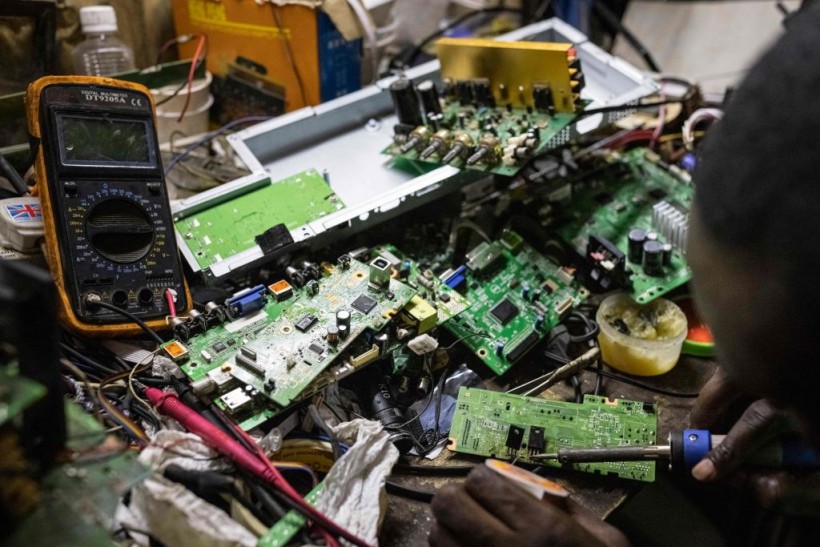The 6th annual International E-Waste Day, scheduled for October 14, is a global initiative aimed at raising awareness and driving action concerning the pressing issue of electronic waste.

(Photo : ED RAM/AFP via Getty Images)
A member of the local NGO Electronic Waste Initiative Kenya (E-WIK) fixes a motherboard in a workshop as the NGO collects electronic wastes to be processed, recycled, and repurposed in an informal settlement in Nairobi, Kenya, on December 3, 2021.
Alarming Reality of E-Waste
While the term "e-waste" often conjures images of discarded laptops, smartphones, and televisions, there exists an extensive category of smaller electronic items that frequently go unnoticed by consumers. Regrettably, these items often find their way into landfills or incinerators, contributing to the broader problem.
EurekAlert! reported that this unseen facet of e-waste, known as "invisible e-waste," remains a silent crisis, hidden in the corners of our homes, escaping our attention, yet carrying significant repercussions for the environment.
A recent study conducted by the United Nations Institute for Training and Research (UNITAR) reveals the staggering scale of these overlooked electronic items, amounting to a staggering 9 billion kilograms of e-waste annually, representing one-sixth of the total e-waste generated worldwide.
An alarming reality emerges as a substantial portion of electronic waste falls within the often-neglected category of "invisible" e-waste. This clandestine assortment includes items such as dormant cables, electronic toys, LED-adorned novelty garments, power tools, vaping devices, and various inconspicuous consumer products that tend to evade consumers' attention.
To visualize the astonishing scale of this overlooked issue, envision these "invisible" e-waste items coalescing in one location-a mountain of waste equivalent to the weight of nearly half a million 40-tonne trucks. This staggering heap would extend over an astonishing distance of 5,640 kilometers, covering the expanse from Rome to Nairobi.
This looming crisis takes center stage on the occasion of the 6th annual International E-Waste Day, set for Saturday. The significance of addressing this challenge becomes increasingly apparent when we consider the perilous components nestled within these products.
Celebrating International E-Waste Day
In conjunction with UNITAR, Interesting Engineering reported that the Waste Electrical and Electronic Equipment (WEEE) Forum has orchestrated International E-Waste Day to unveil the staggering dimensions of the "invisible" e-waste predicament.
Their research findings paint a disquieting picture: out of the colossal 9 billion kilograms of "invisible" e-waste, a substantial 3.2 billion kilograms, equivalent to 35%, comprises electronic toys. Among these are race car sets, electric trains, musical toys, drones, and an array of others.
Astoundingly, New Scientist reported that a staggering 7.3 billion individual e-toys are discarded each year, equating to roughly one e-toy for every person inhabiting our planet.
Also Read: Canada's E-waste Has More Than Tripled in the Last 2 Decades - New Study
The reverberations of this "invisible" e-waste crisis ripple far beyond our homes, underscoring the necessity of raising awareness regarding the recyclable potential of these items.
By doing so, we may avert the squandering of invaluable resources. Especially poignant is the impending surge in copper demand, predicted to increase sixfold by 2030, particularly in Europe.
In this context, the significance of conserving these wasted resources takes center stage, potentially serving as a linchpin in satisfying the demands of strategic sectors such as renewable energy and electric mobility.
Related Article: E-waste Recycling Must be Intensified Globally - Study






